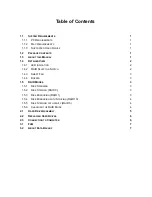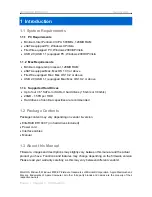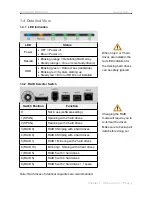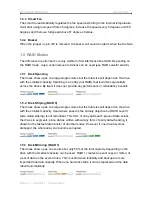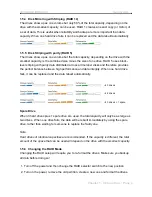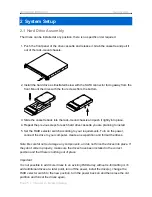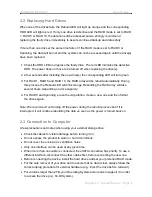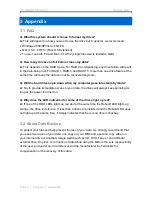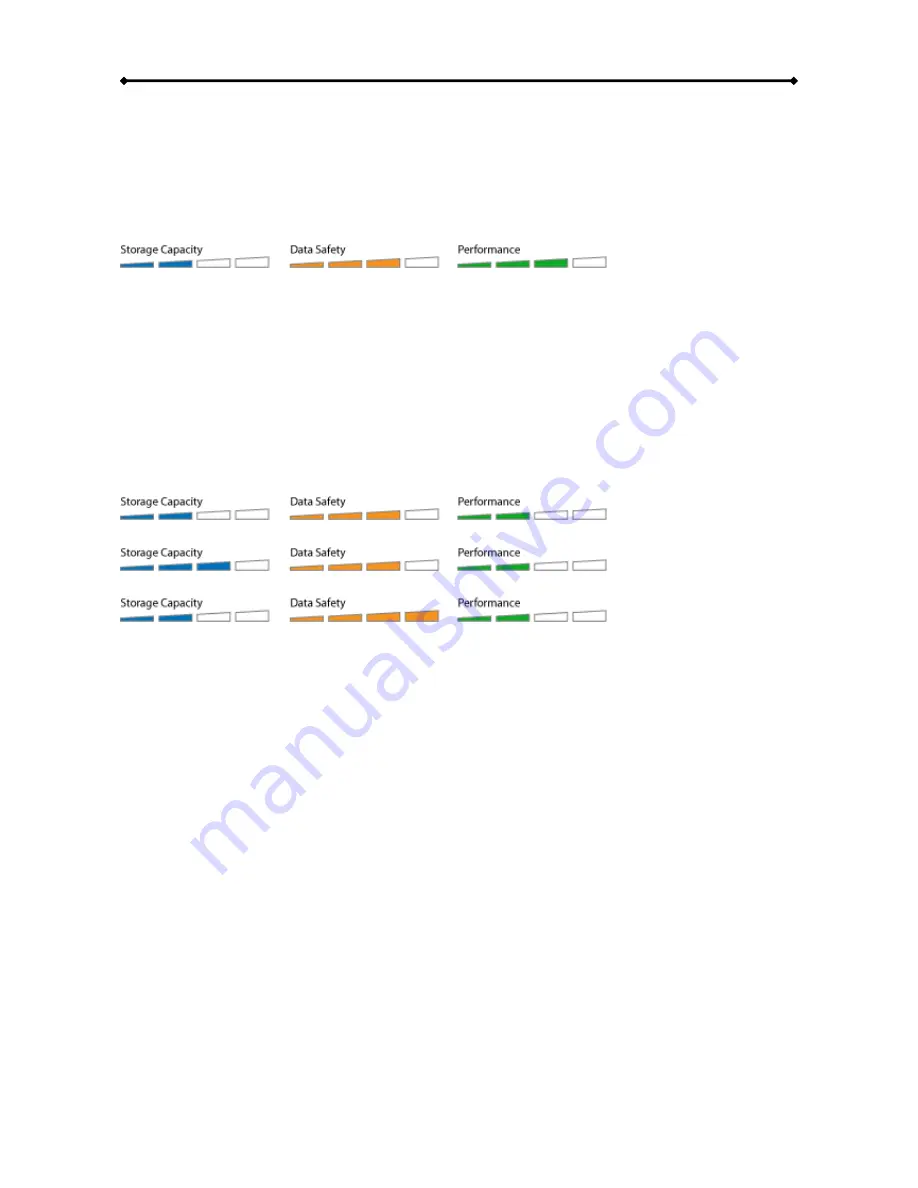
EliteRAID ER104CT User Guide
Chapter 1 - Introduction / Page 4
1.5.4 Disk Mirroring with Striping (RAID 10)
The drives show up as one volume but only 50% of the total capacity, depending on the
drive with the smallest capacity, can be used. RAID 1 creates an exact copy (or mirror) of
a set of data. This is useful when reliability and backup are more important than data
capacity. When one hard drive fails, it can be replaced and the data rebuilt automatically.
1.5.5 Disk Striping with parity (RAID 5)
The drives show up as one volume but the total capacity, depending on the drive with the
smallest capacity, is the combined size minus the size of one drive. RAID 5 uses block-
level striping with parity data distributed across all member disks and therefore provides
the perfect balance between high performance and data integrity. When one hard drive
fails, it can be replaced and the data rebuilt automatically.
Æ
3 drives
Æ
4 drives
Æ
3 1 spare
Spare Drive
When 3 hard drives plus 1 spare drive are used, the total capacity will only be as large as
two drives. When one drive fails, the data will be rebuilt immediately by using the spare
drive, rather than waiting for someone to replace the faulty one.
Note:
Hard drives of identical capacities are recommended. If the capacity is different, the total
amount of the space that can be used will depend on the drive with the smallest capacity.
1.5.6 Changing the RAID Mode
Changing the RAID setup will require you to re-format the drives. Make sure you backup
all data before doing so!
1. Turn off the power and then change the RAID selector switch to the new position.
2. Turn on the power, remove the old partition, create a new one and format the drives.



